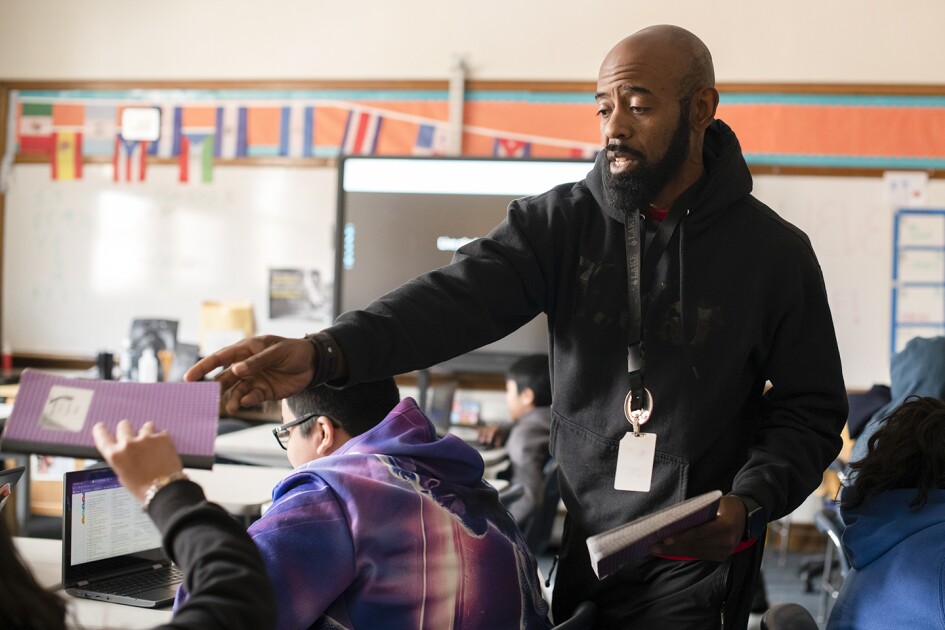Great teachers know how to improve myriad aspects of student writing: idea generation, organization, evidence marshaling, diction, grammar, and more. But even with tools and techniques in each of these areas, students struggle.
As a longtime teacher of writing, first at the college level and now for high school students and professional adult writers, I have learned that attending to the often overlooked emotions that inevitably accompany all types of writing allows teachers to accomplish more with their student writers. You may recognize some of these student profiles:
- The procrastinating student who reveals in conversation that she’s a “bad writer” and therefore can’t bring herself to get started.
- The student who judges every sentence he writes as “sounding stupid,” prompting him to begin and delete, begin and delete, again and again.
- The student who believes that “real writers” have a particular kind of written voice and therefore resorts to jargon and fancy—but not always syntactical!—diction.
- The student who hates her own work, just handing in the first draft without proofreading.
Each of these situations feels like a writing problem that can be fixed with more writing instruction, but, in fact, all of these problems are rooted in the deep and complex emotions that surround writing. As teachers who include writing in our classrooms, regardless of whether writing is our discipline, we can help students overcome their procrastination, slow progress, reliance on the thesaurus, unrevised drafts, and many other writing issues by attending to their emotions as they approach and work through a writing project.
Three techniques in particular can help students through the many emotions that are central to writing:
1. Avoid early judgment. Often writers begin, whether knowingly or not, by envisioning a reader. Worrying about a reader’s reaction early in the process can lead to paralysis, the feeling that no opening sentence, paragraph, or idea is good enough. It prompts writers to rewrite their opening paragraphs endlessly, and it’s the reason that students can say “I worked on this essay for four hours” but have little to show.
When we teach students to avoid envisioning even an imaginary reader, to think instead of their exploratory draft as a diary entry or personal reflection, they can save the judgment for later and write with greater efficiency and even pleasure.
2. Separate the steps. By avoiding early judgment, students can also be taught to write in distinct stages: composition, organization, and editing. Too often, writers believe they will be most efficient and least uncomfortable with their perceived insufficiencies by polishing as they compose. While doing so might help them avoid the pain of ugly sentences, writing is both more stilted and less efficient this way.
Pouring poorly constructed thoughts onto the page quickly and then working to organize and develop them (using techniques like color coding or cutting up the paragraphs and moving them around like puzzle pieces) leads to much stronger content. Saving polish—grammar, diction, phrasing—for the final step, when an imaginary (or real!) reader can be helpful, allows the writer’s best ideas to shine through. Encouraging students to follow these best practices in process, though, requires preparing them for the discomfort of ugly writing and the emotions that accompany truly rough drafts.
3. Writing makes us vulnerable. There’s no way to avoid this; writing feels like the self on a page. Simply acknowledging this raw vulnerability, however, can change the way writers feel. Telling them “I know how hard this is”—not just because of struggles to find the right ideas but because writing makes everyone feel uniquely judged—helps student writers understand that they are not alone.
No less a writer than Gustave Flaubert lamented, “I am irritated by my own writing. I am like a violinist whose ear is true, but whose fingers refuse to reproduce precisely the sound he hears within.” If the celebrated author of Madame Bovary felt plagued by the insufficiency of his writing, student writers are certainly entitled to feel that way, too. Knowing that their discomfort is shared by others, not a solitary or shameful feeling, can push students through those feelings of exposure.
Openly discussing emotions reminds students and teachers alike that writing is difficult for everyone.
This focus on the emotionality of writing can be applied to writers of all ages and to ourselves, too. As teachers, we are often called upon to write: assignment prompts; letters of recommendation; emails; reports; and even blog posts, articles, and op-eds. Openly discussing emotions reminds students and teachers alike that writing is difficult for everyone, and doing so allows us to work through emotional challenges, not seeing them as flaws we should regret but as integral parts of the process that can ease when we are willing to sit with them.
We should remind our students that we empathize with their writing-based emotions, and we can offer them ways to persevere through the potential embarrassment and worries that accompany sharing themselves on the page. Knowing that they can work themselves to a better place by avoiding early judgment, separating their writing into steps, and acknowledging their emotions, we can empower them to be better, more confident, more able writers.








